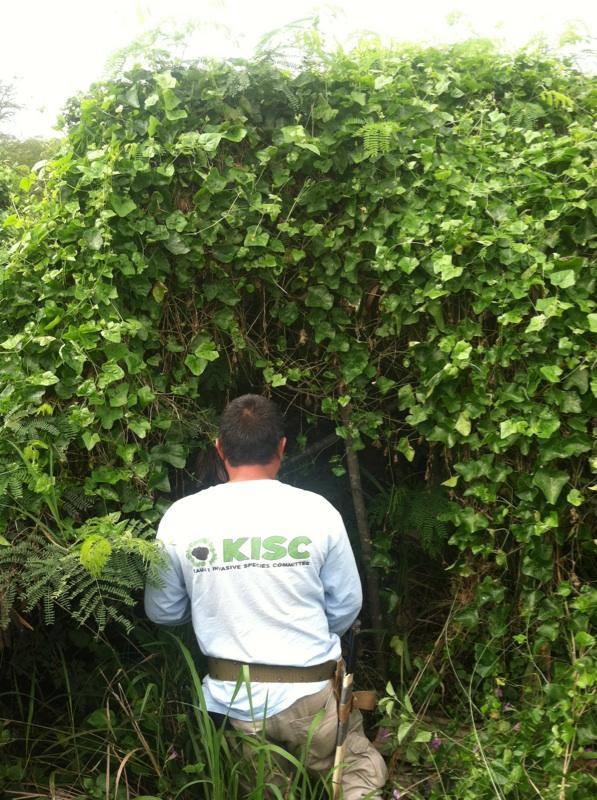
Ivy Gourd
REPORT IF SEEN: This species is currently controlled by KISC, if you see it please report it.
Ivy Gourd
Species: Coccinia grandis
Family: Melastomataceae
Considered very invasive and is on the Hawaii State Noxious Weed List. The Division of Forestry and Wildlife of the Hawaii Department of Land and Natural Resources has designated this species as one of Hawaii’s Most Invasive Horticultural Plants.

Description
- Fast-growing vine with ivy-shaped leaves, white flowers, and 1-3 inch long red fruits.
- Native to tropical Africa and Asia, introduced to Hawaii as a backyard food crop (known as “Thai spinach”)
Impacts
- Vines grow over and smother vegetation, and cover fences and power lines.
- Threatens natural and managed areas.
- Difficult to control because plants regrow from deep roots, even after treating with herbicide.
- Although ivy gourd requires cross-pollination between male and female plants, it is able to spread quickly and can grow up to four inches per day.



On Kauai
- KISC has been actively treating small populations in Kekaha, Poipu, Lihue, Moloaa, Anahola, and Hanalei.
- On the Pono Endorsement Black List. Pono Endorsed Nurseries and Landscapers have agreed to continue to not sale Ivy Gourd.
- You can plant pono by reporting Ivy Gourd to KISC at 808-821-1490 or kisc@hawaii.edu. KISC crew members can remove it from your landscaping free of charge and help identify suitable replacements.

Look-a-likes:

Bengal Clock Vine
Thunbergia grandiflora
This plant is in the same family as Miconia, and is also considered invasive, however it does not cause near the amount of destruction as Miconia. It is visually different from Miconia by having much smaller, solid colored leaves, and only growing up to 3′ tall, as a sprawling shrub. Clidemia also differs by the tiny hairs on the leaves.
